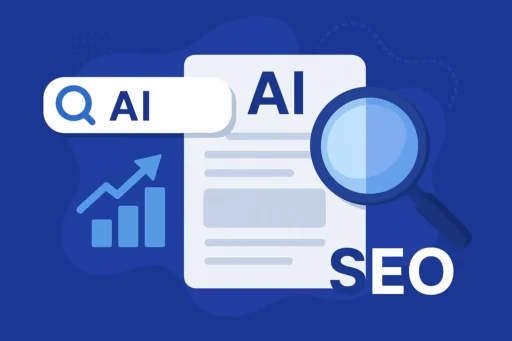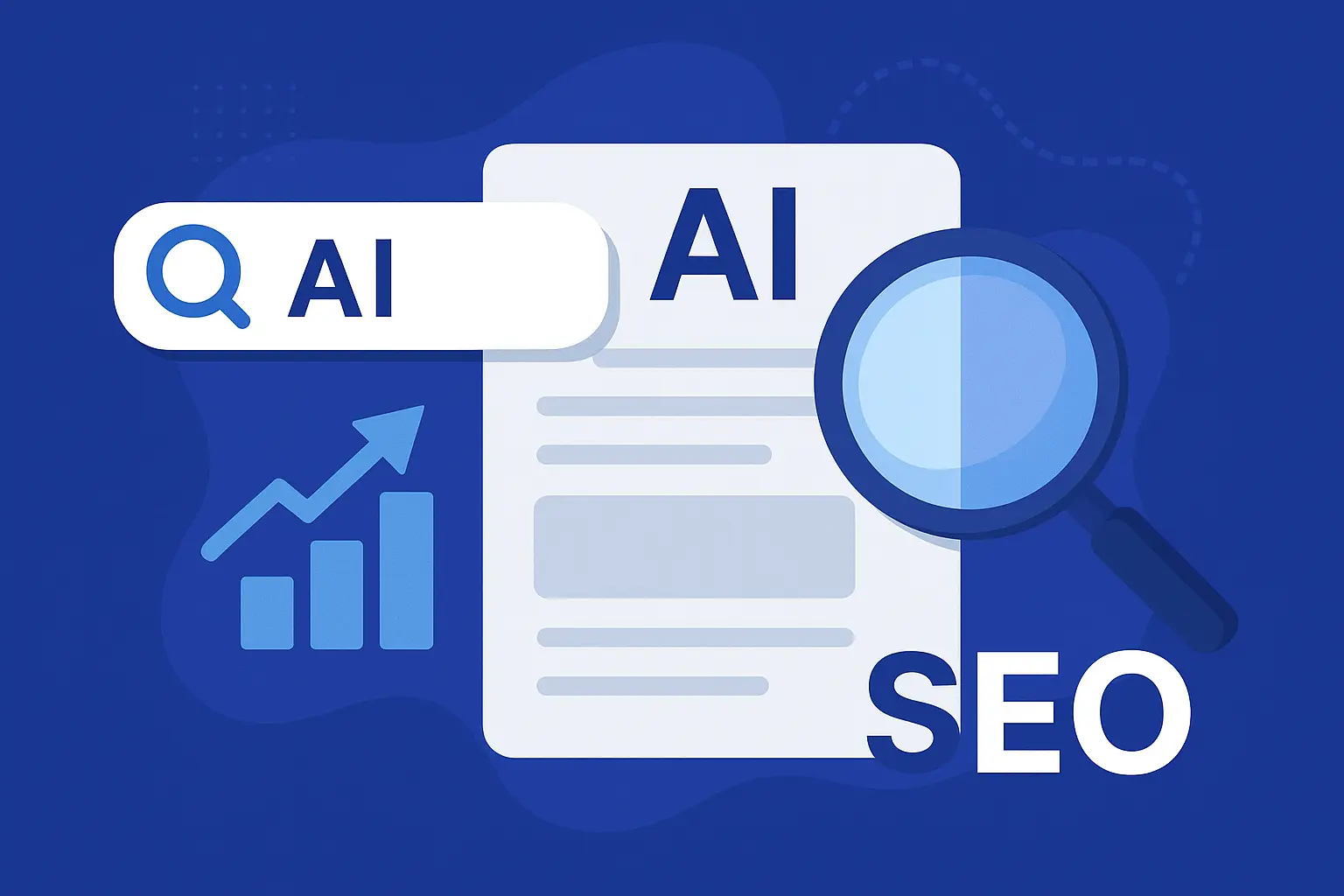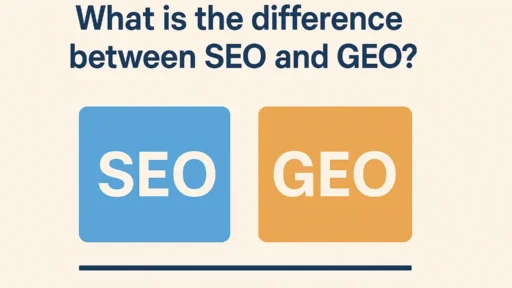Search is evolving at a rapid pace, and one of the biggest shifts we’re seeing is the rise of AI Overviews—AI-generated summaries that appear directly within search results. Instead of just showing a list of blue links, Google, Bing Copilot, ChatGPT, and Perplexity are now generating instant, context-rich answers powered by large language models.
For SEOs, this shift represents both a challenge and an opportunity. Ranking isn’t just about the “10 blue links” anymore—it’s about optimizing for visibility inside AI Overviews. In this article, we’ll break down what AI Overviews are, how they work, why they matter, and how you can adapt your SEO strategies to thrive in this new era of search.
What Are AI Overviews?
AI Overviews are AI-powered summaries that appear at the top of search results, synthesizing information from multiple sources to provide quick, conversational answers.
- Google AI Overview: Generates a short, informative summary directly in SERPs.
- Bing Copilot: Integrated into search and Microsoft products, offering AI-generated insights.
- ChatGPT & Perplexity: Conversational engines that pull structured, real-time knowledge to answer queries.
These AI-driven systems prioritize helpful, trustworthy, and authoritative content, meaning that websites need to go beyond keyword stuffing and focus on EEAT (Experience, Expertise, Authoritativeness, Trustworthiness) principles.
Why AI Overviews Matter for SEO
AI Overviews are reshaping how users interact with search.
Key Impacts on SEO
- Reduced Clicks to Websites
Many users may find answers directly in AI Overviews, reducing traffic to organic listings. - Increased Competition for Visibility
Being cited or referenced within an AI Overview will become as valuable as ranking in the top 3 organic results. - Authority Matters More Than Ever
High-quality, reliable, and original content is more likely to be included in AI-generated answers. - User Intent Is Priority
AI Overviews are designed to match nuanced search intent, meaning SEOs must optimize for context, not just keywords.
How AI Overviews Work (And What SEOs Should Know)
Content Selection
AI Overviews aggregate content from multiple web pages, favoring:
- Well-structured content (clear headings, FAQs, schema)
- Authoritative sources (industry leaders, credible websites)
- Fresh and up-to-date information
Ranking Signals in the AI Era
While exact algorithms remain opaque, SEO experts believe AI Overviews prioritize:
- EEAT factors
- Semantic relevance over keyword density
- Structured data for context and clarity
- Engagement signals like dwell time and CTR
Optimizing for AI Overviews: Actionable SEO Strategies
1. Publish Authoritative, In-Depth Content
AI systems prefer comprehensive resources. Instead of thin articles, aim for 2,000+ word authoritative guides backed with examples, case studies, and statistics.
2. Use Structured Data & Schema Markup
Adding schema (FAQ, How-To, Product, Local Business) helps AI engines interpret and surface your content in overviews.
3. Target Conversational Queries
Since AI Overviews thrive on natural language, optimize for long-tail and question-based queries. For example:
- “What are AI Overviews in Google search?”
- “How do AI Overviews impact SEO strategies?”
4. Update Content Frequently
Freshness matters. AI tools prefer up-to-date insights, so refresh content regularly to maintain visibility.
5. Build Brand Authority & Mentions
Mentions and citations across reputable sources increase your likelihood of being included in AI Overviews. This ties directly to digital PR, link-building,digital PR, link-building, and topical authority.
6. Leverage Multimedia Formats
AI Overviews don’t just pull from text—they may also reference videos, podcasts, and visuals. Use transcripts, captions, and descriptive alt text to make multimedia assets AI-friendly.
Read Also: AI Search Optimization: How to Rank in Google’s SGE Results
Examples of AI Overviews in Action
- Google AI Overview (SEO Query Example): A query like “What is technical SEO?” may display a summarized answer citing multiple blogs, guides, and Google’s official documentation.
- Bing Copilot: Searching for “Best SEO strategies in 2025” may provide an AI-curated list pulling from industry blogs and case studies.
- ChatGPT / Perplexity: When asked, “How do AI Overviews affect website traffic?”, these platforms generate structured explanations citing real-world data.
Industry Data: The Growing Impact of AI Overviews
- According to Gartner, by 2026, 25% of all search results will be generated by AI-driven overviews.
- A BrightEdge study (2024) revealed that up to 30% of clicks in certain verticals are already being absorbed by AI summaries.
- Early testing from SEO agencies shows that websites cited in AI Overviews receive authority boosts and referral traffic, even if organic clicks decline.
The Future of SEO in an AI Overview World
From Keywords to Conversations
Instead of focusing solely on keyword placement, SEOs must think in terms of semantic search, topical depth, and conversational optimization.
The Rise of “Answer Engine Optimization” (AEO)
SEO is evolving into AEO—Answer Engine Optimization—where the goal is not just to rank but to be referenced by AI-powered systems.
Continuous Experimentation
As AI Overviews evolve, SEOs will need to test strategies, monitor analytics, and adapt quickly to stay competitive.
Conclusion
AI Overviews are not the end of SEO—they’re the next evolution of it. For businesses and marketers, the key is to embrace authority, structured content, and conversational optimization.
If you can align your SEO strategy with how AI Overviews process and present information, you won’t just survive in this new era of search—you’ll thrive.
👉 Final Takeaway: Optimizing for AI Overviews means shifting from keyword obsession to answer-driven strategies. SEOs who adapt early will secure visibility in AI-driven search engines like Google AI Overview, Bing Copilot, ChatGPT, and Perplexity.





